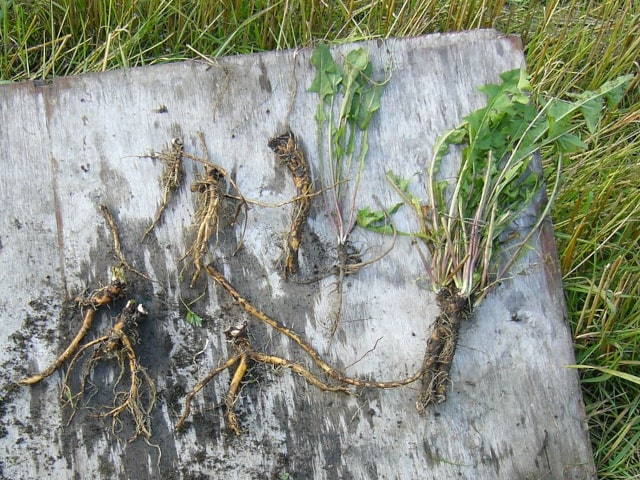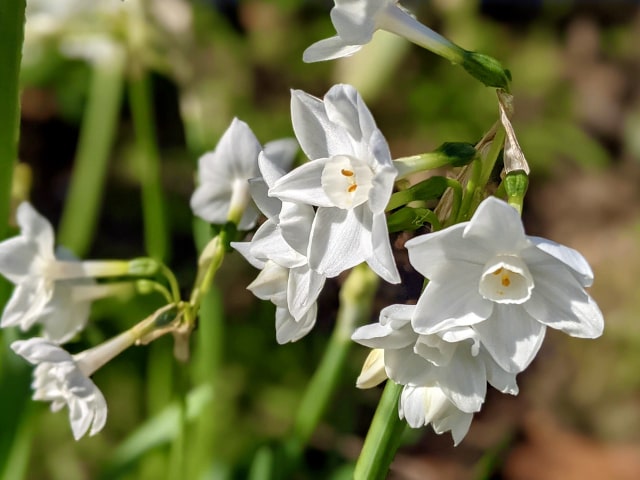
Many people want to get rid of dandelion from their gardens. They see it as almost a weed. Others, however, wish to grow and use dandelion. Dandelions are very beautiful plants and they can be used in many different ways.
Dandelion roots are great and can be used in many different ways. In order to get the most of them, it's important to know how to harvest dandelion roots, how to dry them and how to use them.
Why Harvest Dandelion Roots?
Dandelion roots can be very useful, so if you have dandelions in your garden, consider leaving them to grow. They have beautiful flowers and you can always use their roots in your home.
Keep in mind that dandelion roots are harvested from late fall through early spring. During this time, the plant is dormant and has a lot of stored up energy in the roots. If you wish to take dandelion roots for medical use, it's best to go with a fall harvest. That's because the levels of inulin (insoluble fiber) are high and the fructose levels are low.
Cold weather during winter converts inulin to fructose. It makes the spring roots more palatable for eating. It also makes spring roots less bitter and chewy. To ensure this, you need to dig them before the plant starts to blossom. Another advantage to spring roots is that they are higher in taraxacin, which will help stimulate bile production.
How to Harvest Dandelion Roots
It's relatively easy to harvest dandelion roots, but you need to be careful. The best way to dig the roots is to use a dandelion digger. If you don't have it, simply use a sturdy fork. It will do a good job if you are careful.
While you're digging, make sure not to break or damage the root. You will probably need to dig and break somewhere, but do your best to damage the root as little as possible. If the damage is big, you will lose a lot of sap. Keep in mind that the medical properties are mainly located in the sap, so it's important to keep it.
The thickest and easiest roots to harvest are those in deep, rich soil. To achieve this type of soil, you should always keep a few dandelions in your garden. They are great for reaching deep into the soil and they will sure bring up nutrients.
While harvesting the roots, make sure to do it only in the areas that have not been spayed or treated with chemicals. This is the only way to ensure that the roots are healthy and suitable for use.
It's important to select only large, vigorous plants. Remember: small plants that are spindly have small roots that are not really worth harvesting.
Preserving Dandelion Roots
Once you have harvested dandelion roots, it's important to know how to preserve them. Keep in mind that you might wish to use fresh roots from time to time. For example, you may use them for cooking and making medicines straight away.
However, you will probably want to store and preserve dandelion roots for further usage. Drying works the best for preserving the roots. Make sure they are well scrubbed before you cut them. In case you encounter some really thick roots, make sure to slice them lengthwise into strips. The strips should be of uniform thickness in order to decrease the drying time and also to encourage uniform drying.
To dry the roots, it's best to use a commercial dehydrator. The dehydrator can be used to dry the roots at 95 degrees F until brittle. Alternatively, you may dry roots by spreading them on a screen and placing them in a cool, dry location. Make sure they have a good air circulation. Dry the roots for 3 to 14 days, until brittle.
Keep in mind that dried dandelion roots can last for about a year.
How to Use Dandelion Roots
Once you have harvested and preserved dandelion roots, you can think about how to use them in your home. There are many ways in which you can use dandelion roots. You can make various medicines, or you may use dandelion roots in the kitchen.
Warning: you should not use dandelion root medicine or any food prepared using dandelion roots if you have irritable stomach or bowel, or in case you have an acute inflammation.
How to Make a Tincture and Decoction
In order to extract medical compounds from the roots, they have to be tinctured or decocted. To make a useful tincture, you should place dandelion root in a jar. Cover it with 80 proof (40%) vodka. Cover it tightly and leave it for 4 to 6 weeks. Make sure to shake it every day. After thing time, strain out plant material. Store in a dark glass bottle. Don't forget to label and date the tincture.
In order to make decoction, you should place on ounce of dried roots in a pan with one pint of water. Alternatively, you may use two ounces of fresh roots (by weight). Bring the mixture to a boil. Cover it and simmer for about 20 minutes. Strain and compost the spent roots. These roots decoctions can be used to make simple yet effective healing teas.
Using Dandelion Roots
Dandelion roots are a powerful detoxifying agent. They are also commonly used for treating numerous medical problems, from arthritis to hangovers.
According to the University of Maryland Medical Center, dandelion has been traditionally used as a diuretic. It's used to increase the amount of urine the body produces, which allows the body to get rid of excess fluid. Dandelion has been used to help treating numerous conditions where a diuretic might help, such as high blood pressure or liver problems.
However, it's also important to say that there is no good research on using dandelion as a diuretic on people. In any case, dandelion and dandelion roots are healthy and can't bring harm if they are used in moderation and if you follow the warning: do not use it if you have irritable bowel or stomach or if you have any acute inflammation.
Fresh and dried dandelion can also be used as a mild appetite stimulant. You may also use it to improve upset stomach. Dandelion roots may also be used as a mild laxative. They have been used to improve digestion. There is some research that suggests that dandelion can help improve liver and gallbladder functions, but these studies and results are only preliminary.
Also, some preliminary studies done on animals suggest that dandelion can help in normalizing blood sugar levels and bring cholesterol levels to normal. It may also help lower the level or triglycerides while raising HDL, the "good" cholesterol. Studies done on mice suggest these findings. However, animal studies are only in its first stage and not all of them confirm the beneficial effect of dandelion on blood sugar. In order to confirm the connection, separate studies are needed. Studies done on humans will show if dandelion truly works in lowering blood sugar levels in people.
Some other studies done on animals suggest that dandelion might help fight inflammation. Further studies will show if this effect can be confirmed in humans.
Dandelion Recipes
If you want to use dandelion and dandelion roots, it's good to know some good recipes.
- Strong Herbal Infusion Tea. To make this tea, take 1/2 ounce of dried dandelion leaves (by weight). You may also use one ounce of fresh leaves. This weight is good for one cup of tea. Place the ingredients in a glass canning jar and cover with freshly boiled water. Put the lid on and leave overnight. After this, strain and compost solids. Drink about 3 to 4 cups per day for medical benefit. Alternatively, you may use a French press and steep (or cover) for at least 20 minutes before straining.
- Anti-Cellulite Tea. Dandelion can be used to fight cellulite. It will help your body to metabolize fats and to improve elimination of waste. Dandelion truly works as a cleansing herb. All these properties will help you reduce cellulite. To make a helpful anti-cellulite tea, infuse 1 part dandelion leaf and 1 part nettle (Urtica diodica) leaf. Decoct 1 part dandelion root and 1 part burdock (Arctium lappa) root.
- Decongestant Tea. This tea is made to help your body clear phlegm. It will also open your lungs and sinuses. To prepare this tea, infuse 1 part dandelion leaf, 1 part nettle (Urtica diodica) leaf and 1 part thyme (Thymus vulgaris) herb. Decoct 1 part dandelion root.
Photo credit: Pohjantuuli




1 Comments
This information is awesome and very helpful. Thank You